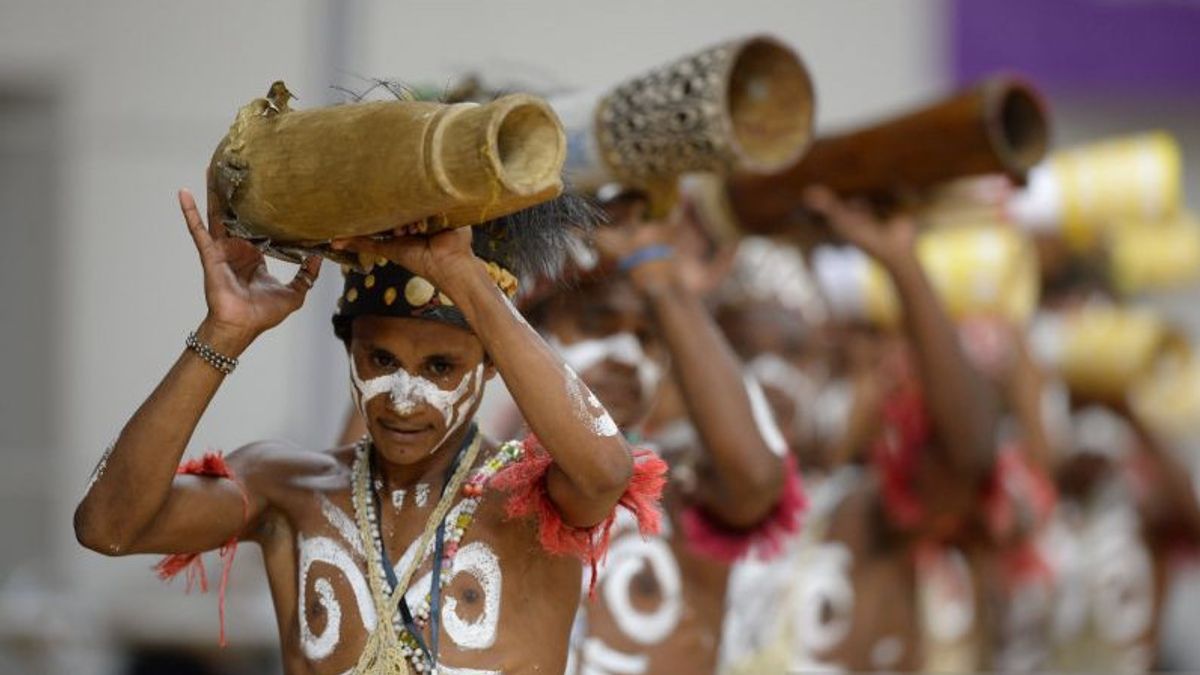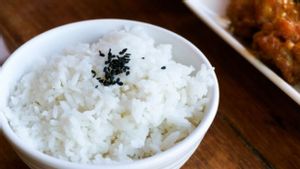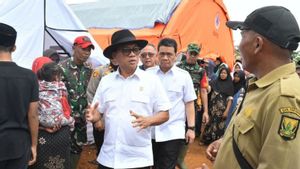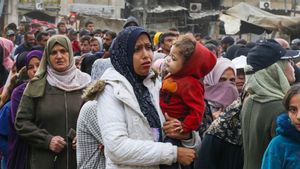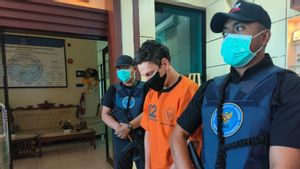JAKARTA - Not only athletes who can shake Istora Papua Rise in Jayapura Regency during the XX Papua PON.
As many as 20 children who are members of the Breath of Lake Sentani (NDS) dance studio have also rocked one of the arenas for the grand sporting event.
Dozens of young people, ranging in age from their teens, thrilled the audience by presenting an art and traditional performance called Akhokoy.
Akhohoy is a typical dance in the Yokiwa traditional village which is included in the Sentani area.
The dance, which is accompanied by chants in the traditional Sentani language, essentially has the meaning of elevating the greatness of the Ondoafi figure or traditional head who is respected by the community.
Apparently the Akhokoy dance is not just a dance that can be performed. This dance has a deep meaning because it is included in a sacred device in the Yokiwa Traditional Village.
“This dance is a chant and a dance that has existed for a long time, telling events and events that occur in everyday life. Chanted from generation to generation, the chant teaches values and life guidelines for the community," said Markus Rumbino, who accompanied the children from the NDS Studio to perform the Akhokoy dance, as reported by Antara.
Now Akhokoy was introduced to the people of the archipelago through the first PON event in eastern Indonesia.
Introducing the greatness, diversity, and beauty of Papua, the land of heaven that fell to earth.

Akhokoy is presented to show how the practice of unity and diversity can blend into beauty which is a reflection of the three tribes in Yokiwa Village.
The three tribes are the Awoitauw Tribe, Fiobetauw Tribe, and Mimitauw Tribe.
The three tribes unite to accept each other's diversity to finally create a legacy that can be passed down from generation to generation.
If likened to the Akhokoy dance, it has a position like Kromo Inggil on the island of Java.
Ondoafi is positioned as someone who is respected for his role in protecting and uniting the people of the three different tribes.
The dance must also be performed only by native people from Yokiwa Village using traditional Sentani clothes.
There is a male dancer who leads the dance, he wears a tassel skirt with a typical Sentani motif painting on his body carrying and blowing an Ame musical instrument made of shells to give instructions.
The dance leader also guides both female dancers and male dancers who have completed using tassel costumes to carry the chants and the Akhokoy dance.
They also performed chants in the traditional language used in Sentani, which only the three tribes possessed.
That's what makes Akhokoy only allowed to be performed by people from Yokiwa Village and cannot be performed by outsiders arbitrarily.
In addition to elevating the greatness of the traditional head, Akhokoy also serves as a reminder for the community not to be arrogant or arrogant.
Therefore, the events that are sung to complement the Akhokoy dance continue to be updated so that they can be relevant to follow changes from generation to generation.
Markus said that one of the latest events included in his performance at Istora Papua Bangkit was the Sentani Flash Flood which devastated the capital city of Jayapura Regency.
This incident equips Akhokoy to remind the people of Sentani to no longer do wrong to the environment and to be willing to protect nature so that such a sad event does not happen again.
The importance of Akhokoy's role as a way of life and also a reminder that is ingrained in the Sentani community, makes this dance highly preserved.
In order for this event to be widely known by the people of the archipelago, the blessing of the indigenous people in Yokiwa Village is needed.
With the consideration of enlivening and succeeding PON Papua, finally the DNS studio was allowed to perform the typical dance from Sentani.
“Because PON is a big national event, the Customary Chief gave permission. Children of the younger generation (who are members of the NDS) are allowed to introduce the culture of Kampung Yokiwa to the people of the archipelago. So that the people of the archipelago get to know Papua which is beautiful and has deep diversity,” said Markus.
One of the Akhokoy dancers who are under the guidance of DNS, Dinna Awoitauw, admitted that she felt proud to be able to introduce the traditional dances of her village to the people of the archipelago.
Not only can he introduce Papuan diversity through artistic forms, but he can also learn deeply about this sacred dance.
Not only from his art but also from the depth of his culture so that as a young generation he can still remember where he took root.
“This Akhokoy dance is very good. Through the Akhokoy dance, we know the folklore that happened in the past. This is told or retold through Akhokoy's dances and songs,” said the young virgin.

It took Dinna and her friends at the Lake Sentani Breathing Studio to learn about Akhokoy.
For Dinna herself, at first she was hesitant because she thought she was still young, but her enthusiasm led her to want to introduce the beauty of Papua through art, making her able to explore Akhokoy.
Seconds by second, minute by minute, and finally turning into years spent perfecting the understanding of a culture that is basically sacred, has sweet fruit resulting in pride.
Not only to understand the roots and depth of its culture, now Akhokoy is also a means for the children of Kampung Yokiwa to introduce the diversity of the Earth of Cendrawasih to the archipelago.
For example, in 2016, Akhokoy once led the NDS Studio to become the winner of the Indonesian Children's Karawitan Concert which was held at the Jakarta Arts Building (GKJ).
Akhokoy is also a bridge for the younger generation of Yokiwa to get to know the world more broadly.
By coming and bringing Akhokoy to other areas of the archipelago, the children can learn and gain new knowledge from other areas of the Mother Earth.
Of course, he hopes that Akhokoy can continue to exist for generations to come, not only preserving the historical roots of Yokiwa Village but also being a picture of the beauty of the Cendrawasih Earth in the eyes of the people of the archipelago.
The English, Chinese, Japanese, Arabic, and French versions are automatically generated by the AI. So there may still be inaccuracies in translating, please always see Indonesian as our main language. (system supported by DigitalSiber.id)
